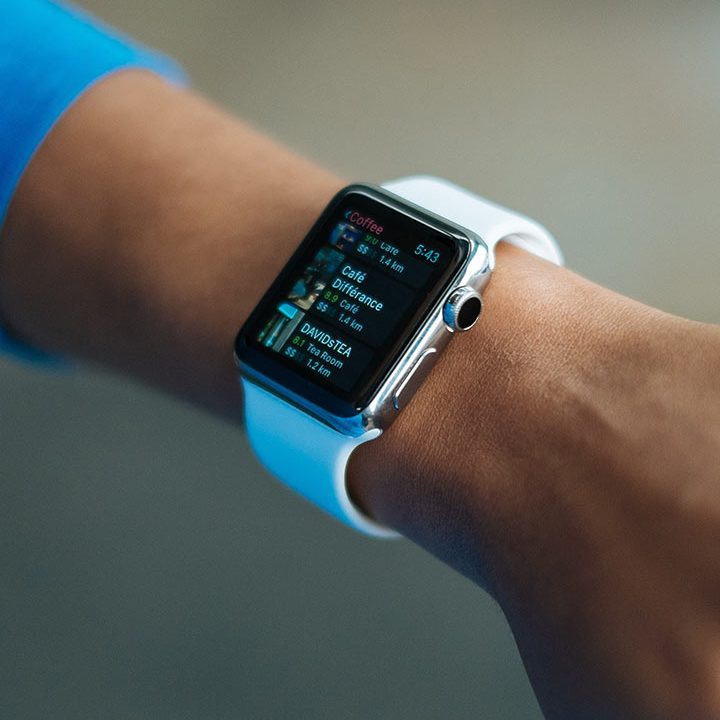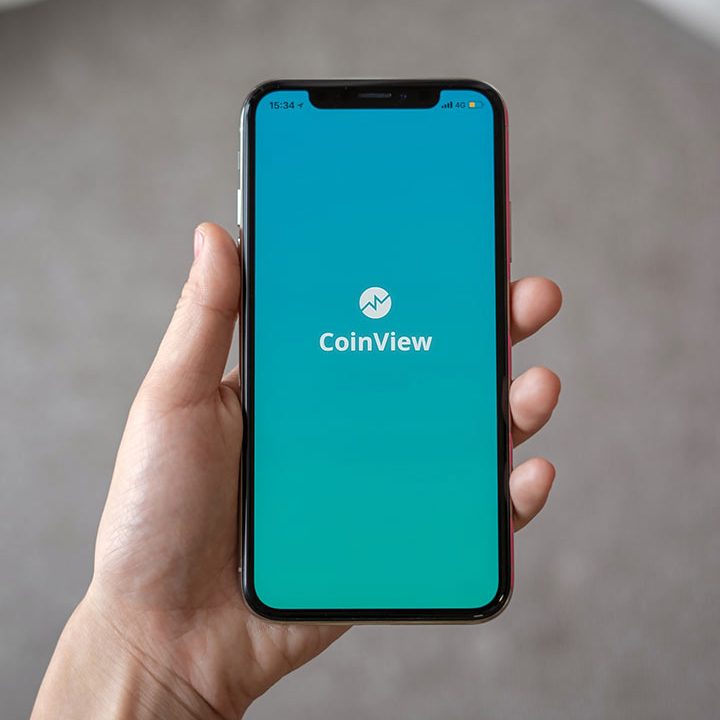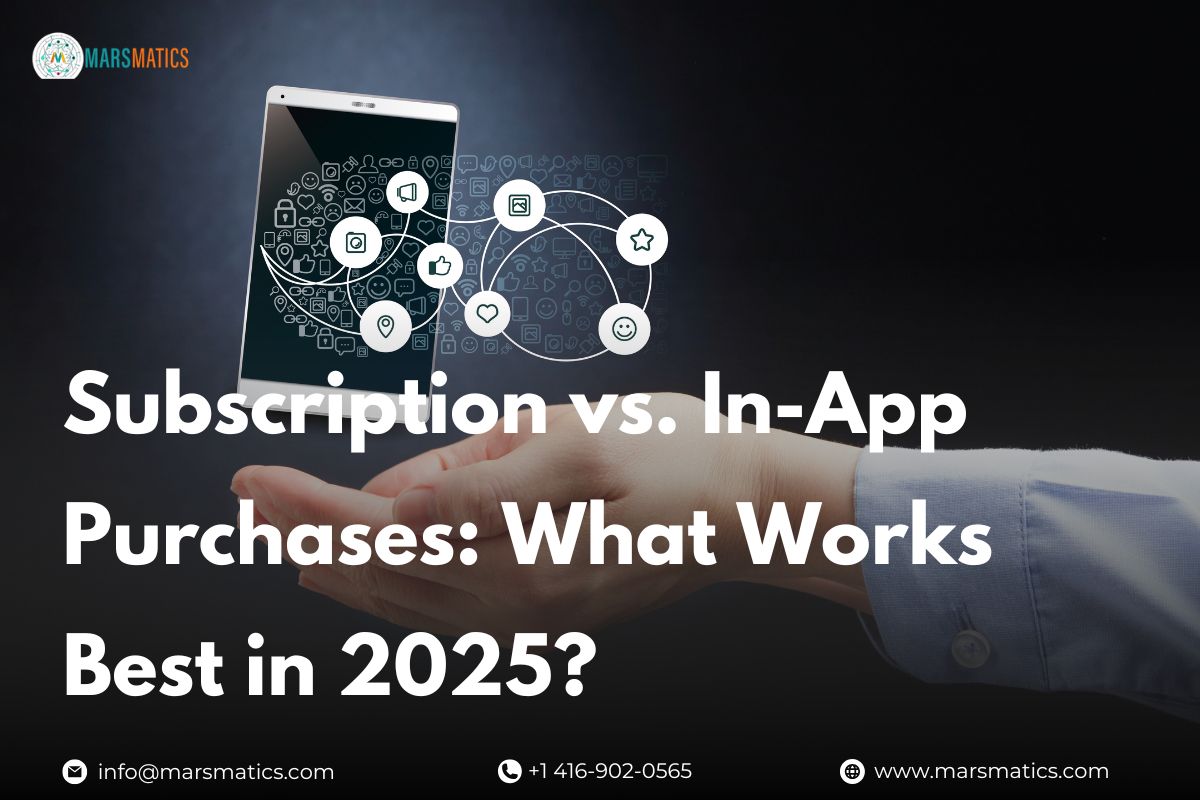Subscription vs. In-App Purchases: What Works Best in 2026?
Choosing how to make money from your app can be the difference between a breakout success and a forgotten download. In 2026, developers are faced with a tough decision: Subscription vs. In-App Purchases which model truly delivers the best return? With changing user behavior, rising competition, and new technology, picking the right path isn’t as straightforward as it used to be. In this blog, we’ll explore the pros and cons of both models and examine how the most successful apps are adapting their app monetization models in 2026 to drive growth, retain users, and boost revenue.
What is a Subscription Model in Mobile Apps?
The subscription model is one of the most popular app monetization models in 2026, especially for apps that offer ongoing value like entertainment, fitness, productivity, or learning platforms. With this approach, users pay a recurring fee monthly, quarterly, or yearly to access premium features, content, or services.
This model allows developers to generate predictable, recurring revenue, which is ideal for planning updates and scaling the app. From a user’s perspective, subscriptions often come with added benefits like ad-free experiences, exclusive content, or advanced features.
The right subscription pricing strategies is key. Some apps offer free trials, while others use tiered pricing to cater to different user needs. The goal is to balance affordability with value to encourage long-term user commitment. When comparing Subscription vs. In-App Purchases, the subscription model shines for apps that deliver consistent value over time. However, it’s not always the best fit—understanding your audience and app usage patterns is crucial in deciding which model works best for your business.
Also Read: Data Privacy Concerns in 5G Mobile App Ecosystems
What Are In-App Purchases (IAP)?
In-app purchases (IAP) are a common way mobile apps earn money by offering users the option to buy digital content or features directly within the app. These purchases can be anything from extra game levels and virtual coins to unlocking special tools or removing ads.
There are generally three types of IAPs:
- Consumables (used once, like game currency),
- Non-consumables (one-time unlocks, like a premium feature), and
- Subscriptions (ongoing access, though often grouped separately in Subscription vs. In-App Purchases comparisons).
IAPs work best for apps that offer on-demand value, especially in gaming, lifestyle, and utility categories. They give users flexibility to pay only for what they want, when they want it—without committing to a recurring cost.
In the broader discussion of Subscription vs. In-App Purchases, IAPs are a flexible and user-controlled option. They’re ideal for developers who want to monetize user engagement without requiring long-term commitment.
Also Read: Tips for Choosing the Best Mobile App Development Company
Market Trends in 2026:
Global App Revenue Statistics:
The mobile app industry continues to grow rapidly, with global revenues projected to surpass $600 billion by the end of 2026. A significant portion of this revenue comes from in-app purchases and subscriptions—two dominant app monetization models in 2026. According to industry data, subscription-based apps now account for nearly 60% of total consumer spending on mobile apps, while in-app purchases still dominate in gaming and entertainment.
Apps in the health, education, and productivity categories are seeing strong performance through recurring subscriptions, while gaming and utility apps are benefiting from one-time in-app purchases. This shows that both models play a vital role in shaping mobile app revenue strategies depending on the app type and audience.
User Behavior and Preferences:
In 2026, users are more value-conscious and selective about where they spend money in apps. Studies show that while many users prefer free apps, they are willing to pay for added features or content—if the experience justifies the price. This shift highlights the importance of offering flexible and transparent pricing.
Younger audiences tend to favor microtransactions and cosmetic upgrades, while older demographics are more comfortable with all-access subscriptions. When comparing Subscription vs. In-App Purchases, developers must now consider not just profit margins but also user satisfaction and long-term retention.
The key takeaway? Understanding your target audience and aligning with their expectations is critical for choosing the right monetization model and crafting effective mobile app revenue strategies in 2026.
Pros and Cons of Each Monetization Model:
Pros and Cons of Subscription-Based Apps:
Subscription-based apps have become increasingly popular, especially for services that offer ongoing value like fitness, education, entertainment, or productivity tools. One of the biggest advantages of this model is the ability to generate steady, recurring revenue, which makes it easier to plan for updates and scale operations.
Pros:
- Predictable and recurring revenue stream
- Encourages long-term user engagement
- Ideal for apps that continuously provide fresh content or services
- Allows for flexible subscription pricing strategies (monthly, annual, tiered plans)
Cons:
- Users are cautious about recurring payments
- High churn rate if the value isn’t consistent
- Can be difficult to convert free users to paid subscribers
While subscriptions are a strong contender for the best monetization model for apps offering consistent services, they require careful planning to maintain value and reduce cancellations.
Pros and Cons of In-App Purchases:
In-app purchases (IAP) allow users to pay only when they want something specific—like extra lives, virtual currency, or feature unlocks. This model works particularly well for gaming, utility, and lifestyle apps.
Pros:
- No ongoing commitment required from users
- Flexible pricing options for different user types
- Great for offering one-time perks, upgrades, or digital goods
- Can boost revenue quickly with the right in-app purchase optimization tips
Cons:
- Revenue can be inconsistent or unpredictable
- Users may ignore IAPs if the app doesn’t provide enough incentive
- Heavy reliance on frequent engagement or upsells
When done right, IAPs offer an excellent balance of flexibility and revenue potential. However, they require thoughtful placement and timing of purchase prompts—making in-app purchase optimization tips crucial to success.
Also Read: All You Need to Know About the White Label Mobile App
Which Model Works Best by App Type in 2026?
| App Category | Best Monetization Model | Why |
| Health & Wellness | Subscription | Continuous content + guided programs |
| Mobile Games | In-App Purchases | One-time boosts, upgrades |
| Productivity Tools | Subscription | Long-term value and feature access |
| Learning/Education | Hybrid (IAP + Subscription) | Unlock courses + continuous learning tools |
Hybrid Monetization Models: The Best of Both Worlds?
Many successful apps in 2026 are now combining both subscriptions and in-app purchases to create hybrid monetization models. This approach offers the flexibility of one-time purchases with the consistent income of recurring billing—often making it the best monetization model for apps that want to serve a broad user base.
| Feature | Subscription Model | In-App Purchases | Hybrid Monetization Model |
| Revenue Type | Recurring (monthly/yearly) | One-time | Mix of recurring + one-time |
| User Experience | Full access with continuous payment | Pay only for what’s needed | Flexible: core access + optional extras |
| Common Use Cases | Streaming, fitness, productivity apps | Mobile games, utility tools | Learning platforms, creative apps, premium games |
| Flexibility | Moderate (requires commitment) | High (user-controlled) | Very high (users choose how to engage) |
| Challenges | Managing churn, proving ongoing value | Driving purchase frequency | Balancing value, avoiding user confusion |
| Pricing Approach | Tiered plans, trials, bundles | Microtransactions, feature unlocks | Smart use of subscription pricing strategies + IAP |
| Best For | Long-term content/services | Short-term or optional features | Apps needing scalable income and wide appeal |
By offering a hybrid model, developers can tap into multiple revenue streams while giving users the freedom to choose how they want to pay—making it one of the best monetization models for apps in 2026.
Key Factors to Consider When Choosing Between the Two:
Choosing the right monetization approach in app monetization models 2026 depends on several critical factors:
- Apps offering continuous value (e.g., content updates, services) tend to suit subscriptions, while one-time features work better with in-app purchases.
- High-engagement apps can benefit from subscriptions; casual or one-time-use apps are often better with IAPs.
- Subscriptions offer predictable, recurring income. In-app purchases may result in quick spikes but less consistency.
- Some users prefer ongoing access through subscriptions, while others are more comfortable with one-time purchases.
- Subscriptions require consistent value to avoid churn. IAPs rely on perceived immediate value at the moment of purchase.
- Subscription models often need ongoing updates and support, while IAPs can be easier to maintain with static offerings.
In summary, understanding your app’s function, user behavior, and revenue needs is essential when deciding between Subscription vs. In-App Purchases in the evolving landscape of app monetization models 2026.
Developer Tips to Maximize Monetization in 2026:
To boost earnings and user satisfaction in 2026, app developers should focus on smart, data-driven strategies. Here are some key tips:
- A/B test Subscription vs. In-App Purchases to see which resonates best with your audience before scaling.
- Analyze user behavior to offer targeted discounts, bundles, or upgrade prompts that match their habits.
- Offer flexible plans (monthly, yearly, family) and test free trials or limited-time discounts to boost conversions.
- Show purchase prompts during moments of high user satisfaction or engagement for better results.
- Hybrid models—subscriptions + IAPs—are trending in mobile app revenue strategies as they cater to diverse user preferences.
- Offer continuous value, regular updates, and personalized content to reduce churn and increase long-term revenue.
By following these tips, developers can build effective mobile app revenue strategies that align with user expectations and market trends.
Final Verdict: Subscription or In-App Purchases?
Choosing between Subscription vs. In-App Purchases in 2026 isn’t about which model is universally better—it’s about what works best for your app, your users, and your long-term goals. Both approaches have their strengths, and with the rise of hybrid models, many developers are finding success by combining the two.
As you explore the best app monetization models in 2026, focus on understanding your audience, testing different strategies, and delivering real value. Whether you choose subscriptions, in-app purchases, or a blend of both, success lies in creating a seamless user experience backed by smart, flexible mobile app revenue strategies.
Remember: it’s not just about making money—it’s about building an app people love and are willing to pay for.
FAQs
Q1: Are subscriptions more profitable than in-app purchases in 2026?
Yes, subscriptions are generally more profitable in 2026 due to predictable, recurring revenue and higher customer lifetime value. However, profitability depends on the app type and user engagement.
Q2: Can I use both models in a single app?
Absolutely. Many successful apps use a hybrid model, combining subscriptions for core access and in-app purchases for optional features or content upgrades.
Q3: How do I reduce churn in subscription apps?
To reduce churn, offer consistent value, personalize user experiences, send renewal reminders, and use smart subscription pricing strategies like flexible plans or loyalty discounts.
Q4: What are the best tools to manage in-app purchases and subscriptions?
Top tools include RevenueCat, Glassfy, Qonversion, and native platforms like Google Play Billing and Apple StoreKit, all of which help track, optimize, and automate monetization workflows.








